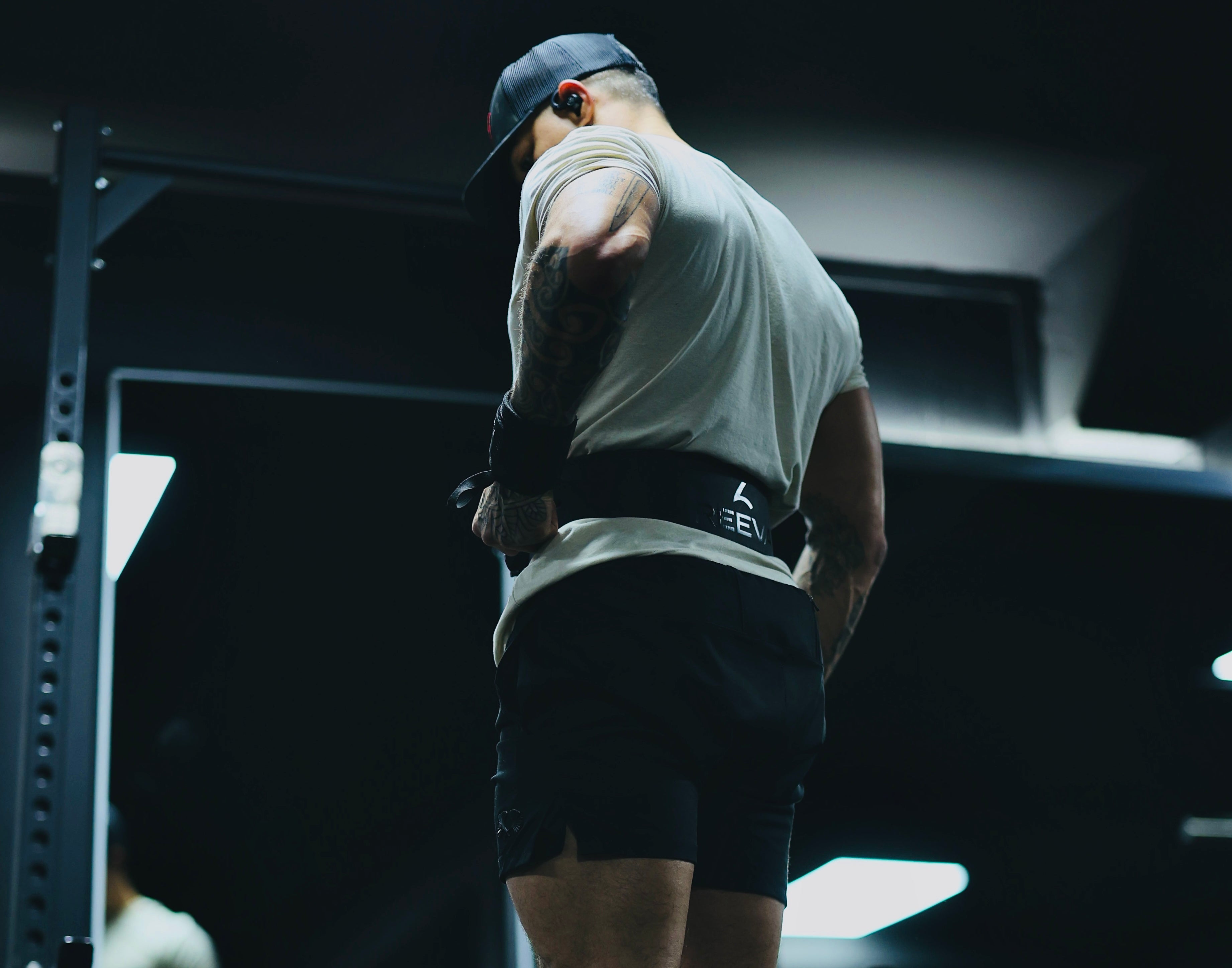Quand commence-t-on à utiliser une ceinture de levage ?

Les ceintures de musculation sont devenues monnaie courante dans la plupart des salles de sport. Elles sont conçues pour soutenir le bas du dos lors de la levée de charges lourdes, et de nombreuses personnes pensent qu'elles contribuent à prévenir les blessures. Toutefois, la question de savoir si les ceintures d'haltérophilie sont nécessaires ou bénéfiques fait l'objet d'un débat. Dans cet article, nous allons briser les mythes et vous fournir les faits dont vous avez besoin pour prendre une décision éclairée sur l'utilisation des ceintures d'haltérophilie.
QUAND LA CEINTURE N'EST PAS NÉCESSAIRE
Une ceinture d'haltérophilie n'est pas toujours nécessaire, et vous devriez l'éviter si vous faites partie de l'une des catégories suivantes :
Vous ne faites pas de squat ou de soulevé de terre. Les ceintures d'haltérophilie sont surtout utiles lors de l'exécution de mouvements qui exercent une grande force sur le dos, comme les squats, les deadlifts, les push press, etc. Si vous vous entraînez avec des mouvements au poids du corps ou avec des haltères, une ceinture d'haltérophilie n'est peut-être pas nécessaire.

Les ceintures d'haltérophilie ne corrigent pas une mauvaise forme, et il est essentiel d'avoir une bonne forme avant d'utiliser une ceinture d'haltérophilie. L'utilisation d'une ceinture d'haltérophilie avec une mauvaise forme peut aggraver votre posture et augmenter votre risque de blessure. Tant que vous ne maîtrisez pas la bonne forme, vous devriez éviter d'utiliser une ceinture d'haltérophilie.
Stabilisation adéquate Si vos muscles abdominaux sont faibles, il peut être difficile de soulever des poids sans ceinture d'haltérophilie. Cependant, si vous comptez sur une ceinture d'haltérophilie pour vous soutenir, vos muscles abdominaux risquent de s'affaiblir. Par conséquent, il est essentiel d'apprendre à soulever des poids sans ceinture pendant les phases de progression des débutants et des intermédiaires.

QUAND VOUS POUVEZ AVOIR BESOIN D'UNE CEINTURE
L'un des principaux avantages de l'utilisation d'une ceinture d'haltérophilie est la prévention des blessures. Lorsque vous soulevez des poids lourds, en particulier avec des exercices comme les squats et les deadlifts, vous exercez une forte pression sur votre dos et votre tronc. Cela peut entraîner des blessures orthopédiques, en particulier si vous soulevez des poids à 80 % ou plus de votre maximum d'un poids. Une ceinture d'haltérophilie peut aider à prévenir ces blessures en apportant un soutien supplémentaire à votre tronc.
Outre la prévention des blessures, les ceintures d'haltérophilie peuvent vous aider à soulever plus de poids. Des recherches ont montré que les athlètes peuvent augmenter leur poids maximal de 9,7 % pour les femmes et de 12,4 % pour les hommes après s'être entraînés avec une ceinture pendant seulement deux semaines. Cette amélioration de la force est due en partie à l'amélioration de la biomécanique liée à l'utilisation d'une ceinture d'haltérophilie.
Lorsque vous portez une ceinture d'haltérophilie, vous forcez vos jambes à supporter une plus grande partie du poids lors d'exercices tels que les squats et les deadlifts. Cela peut aider à réduire le stress sur votre dos et votre colonne vertébrale, vous permettant de soulever des poids plus lourds sans augmenter votre risque de blessure. En outre, la pression intra-abdominale à l'intérieur du corps peut augmenter de plus de 40 % lorsque vous portez une ceinture, ce qui peut réduire la pression sur le bas du dos et améliorer la stabilité de la colonne lombaire.
Les ceintures d'haltérophilie peuvent également vous aider à franchir des paliers dans votre entraînement. De nombreuses personnes qui s'entraînent naturellement se retrouvent bloquées à un certain niveau de force, et l'incorporation d'une ceinture d'haltérophilie dans leur routine peut les aider à faire tomber leurs records de force en une seule fois. Cette amélioration de la force peut également avoir un impact positif sur votre force mentale et votre confiance en vous dans la salle de sport.
Bien que les ceintures d'haltérophilie soient un accessoire idéal pour de nombreux haltérophiles, il est important de les utiliser correctement. Il est préférable d'utiliser une ceinture d'haltérophilie pour des exercices tels que les squats et les deadlifts, où le soutien supplémentaire peut faire une grande différence. Cependant, vous ne devez pas vous servir de la ceinture comme d'une béquille ou l'utiliser pour tous les exercices. Vous devez également vous assurer que la ceinture est bien ajustée et qu'elle est bien serrée afin de fournir le meilleur soutien possible à votre tronc.
En conclusion, les ceintures d'haltérophilie sont un excellent accessoire pour les haltérophiles intermédiaires et avancés qui veulent tirer le meilleur parti de leurs exercices. Elles peuvent aider à prévenir les blessures, à améliorer la biomécanique, à augmenter la force et à franchir des paliers dans l'entraînement. Cependant, il est important de les utiliser correctement et de ne pas s'en servir comme d'une béquille. Si vous souhaitez intégrer une ceinture d'haltérophilie à votre programme, consultez un entraîneur qualifié pour vous assurer que vous l'utilisez correctement et en toute sécurité.
Nos ceintures d'haltérophilie Reeva sont fabriquées avec du cuir de première qualité et conçues pour aider même les plus grands bodybuilders à briser les plateaux de squat et de deadlift ! Cliquez ici pour en savoir plus. Si vous souhaitez créer votre propre ceinture, n'hésitez pas à de consulter nos ceintures de levage.
- Tags: lifting belt tips











